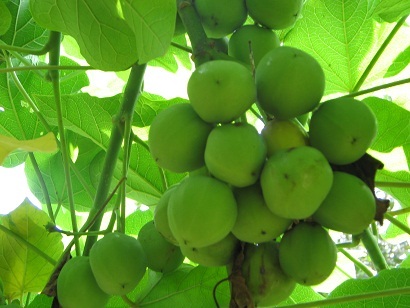IndianOil tests jatropha oil coprocessing at petroleum refinery



June 6, 2013
BY Ron Kotrba
In May, Faridabad, India-based IndianOil announced it successfully demonstrated coprocessing jatropha oil with petroleum crude in existing diesel hydrotreating units at the Chennai Petroleum Corp. Ltd. refinery in Manali, Himachal Pradesh, India.
IndianOil said it also developed a process to remove gums and metals from jatropha oil prior to coprocessing, a necessary step since metals are poisonous for the catalyst in the diesel hydrotreating unit. A specific catalyst was developed for the jatropha oil-crude petroleum oil blend by IndianOil’s R&D team, the company stated.
Creda Biofuels Ltd., a joint venture of IndianOil and Chhattisgarh Renewable Energy Development Authority, supplied 200 tons (approximately 60,000 gallons) of jatropha oil for the project.
The diesel hydrotreating unit used up to 6.5 percent of jatropha oil in the mix. During the trial, the firm said diesel cetane number improved by two points, sulfur content was reduced and the inlet temperature of the reactor could also be lowered by 100 degrees Celsius, with resultant energy savings.
Advertisement
Advertisement
IndianOil is India’s flagship national oil company with business interests straddling the entire hydrocarbon value chain. It employs more than 34,000 workers.
Advertisement
Advertisement
Related Stories
The USDA significantly increased its estimate for 2025-’26 soybean oil use in biofuel production in its latest World Agricultural Supply and Demand Estimates report, released July 11. The outlook for soybean production was revised down.
U.S. fuel ethanol capacity fell slightly in April, while biodiesel and renewable diesel capacity held steady, according to data released by the U.S. EIA on June 30. Feedstock consumption was down when compared to the previous month.
The U.S. EPA on July 8 hosted virtual public hearing to gather input on the agency’s recently released proposed rule to set 2026 and 2027 RFS RVOs. Members of the biofuel industry were among those to offer testimony during the event.
The USDA’s Risk Management Agency is implementing multiple changes to the Camelina pilot insurance program for the 2026 and succeeding crop years. The changes will expand coverage options and provide greater flexibility for producers.
The USDA’s National Agricultural Statistics Service on June 30 released its annual Acreage report, estimating that 83.4 million acres of soybeans have been planted in the U.S. this year, down 4% when compared to 2024.
Upcoming Events










